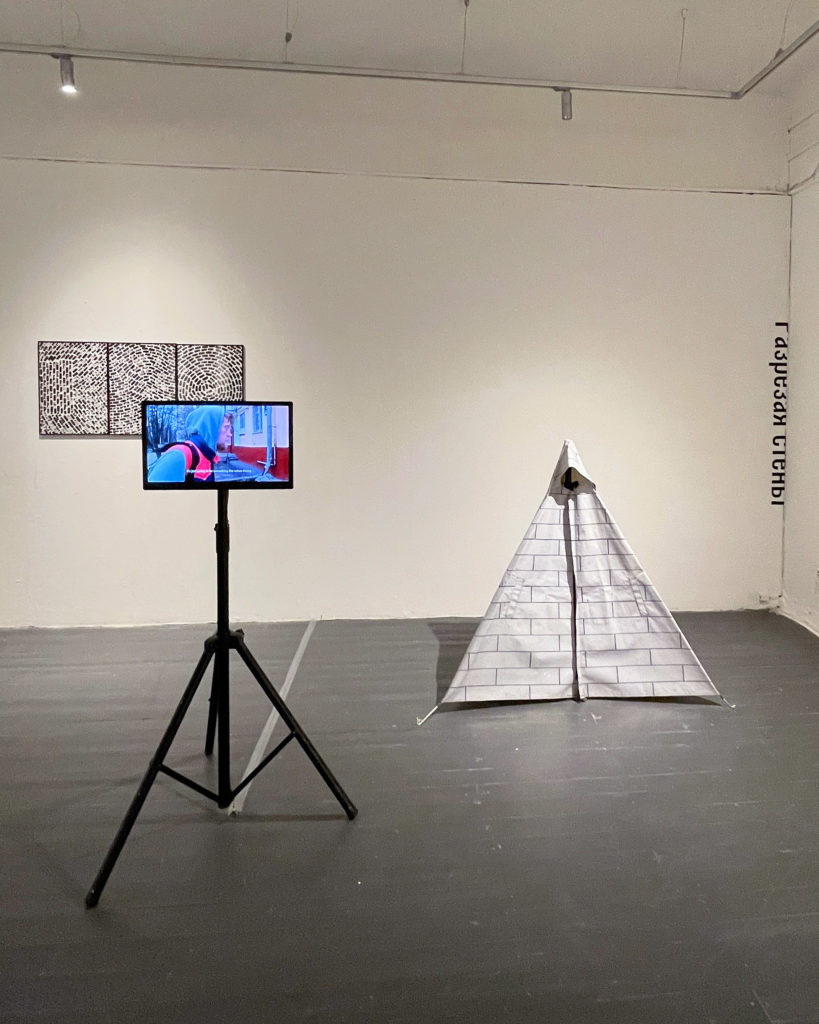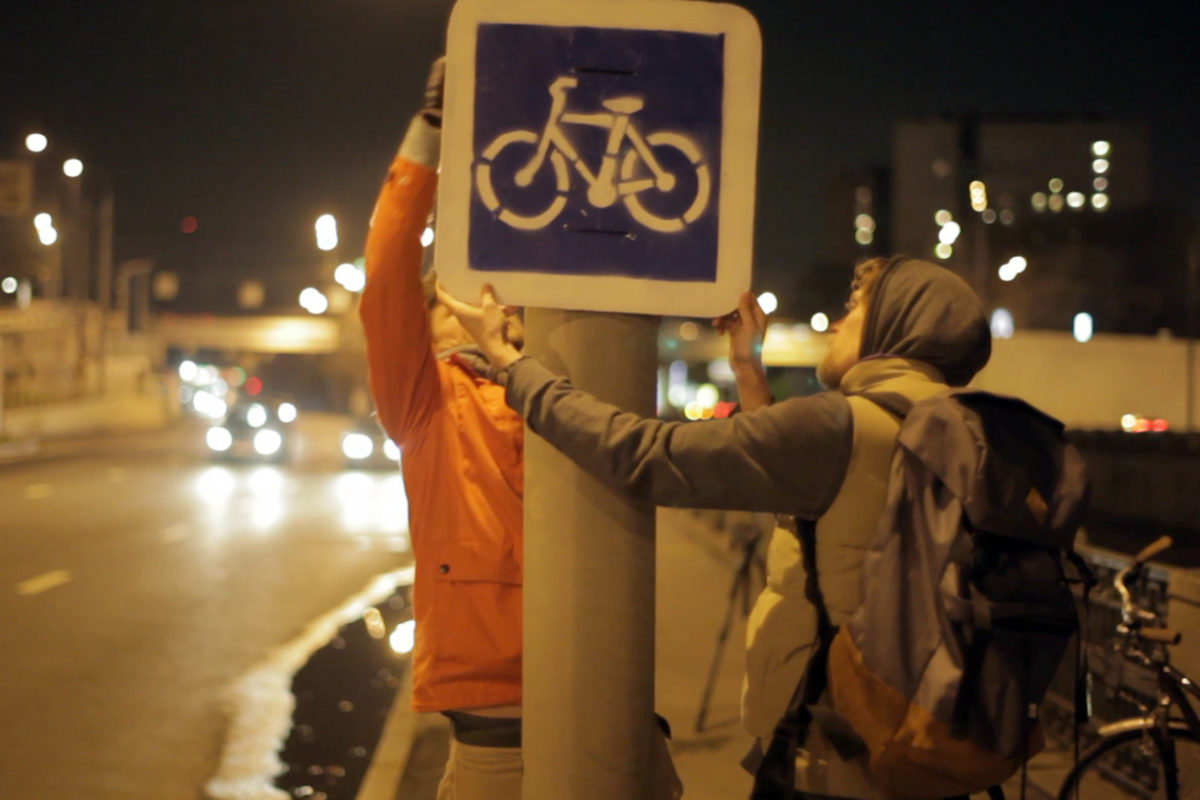2020
Moscow
A solo show at CCI Fabrika
Wandering around the city and going into meandering labyrinths of its older parts, we often encounter the layered buildup of architecture, interests, circumstance. Here is a building expansion, a bolt-on, a patch-up; some elements get partially destroyed, others fall off on their own. Some other place there is construction that ran over schedule, the netting is covering the facade and mimicking its major features as if an outline drawing. Sometimes, however, the original face of a building is so fantastical that it looks like a mutant born out of decades of wicked experimentation, whereas in fact it was this way from day one. “What’s the purpose of this niche over here?” “Why does the route go down first and then immediately make you go back up?” “What a baffling design!” Our surprise, or sometimes indignation, has no limit. Yet, no rules or regulations, restrictions or fines could ever turn the city into a streamlined machine. This ever-changing environment – with its constant corrupting and confusing effect on developers, advertisers, municipal services, public officials, and plain citizens, who themselves do not make it any easier – can only be handled with cunning. To try fitting in with the logic of urban development is hard, and at the end of the day misguided, whereas to hack and do Partizaning interventions is much more interesting.
Igor Ponosov has had a period as a figure in guerilla urbanism. And it is not like he no longer is, but he has discovered a new, poetic aspect in his activity. He decided to abandon any predetermined clear-cut program and venture on a journey on the waves of chance, intuition filling his sail. Since the mid-2010s, as he himself puts it, Igor has been working with urban materials, physically interacting with objects, and exploring architecture through mimicry. The artist cut out fragments of canvas facade coverings to turn them into paintings or use them in the everyday, e.g., in place of window blinds. As if a professional prosthetist, he made buildings whole with the missing pieces. He gave the outdoor sculpture a particular, fragmented packaging. He himself became the brickwork or a banner or some random drawing on the wall and merged with the landscape. Not to disappear in it completely, though. Quite the opposite: it was the architecture that became an extension of the artist, his natural outfit, or wings and legs and tail. This was a conspicuous proclamation of “what city does for me” instead of “what I do for the city.”
But the city is insatiable. As you make the roofs your hackle and the facades your skin, the architecture still does not concede. It will try and grow into you, take over from the inside. It has more resources, backed by many centuries. And an artist is only human. In the face of the colossus that he opposes and tries to harness, his abilities are insignificant. From this emerges a certain dance, almost ritual-like. The artist approaches it from one side, then from another, and on. Searching for tears in the city fabric. Searching for untrodden paths, or paths once walked by the adventurers but now forgotten and overrun with grass. The time is to rediscover it. Awe, excitement, irresistible desire to take risks come over the artist. As the dance ends and it seems to the artist the moment of triumph has arrived, it is the time to cobble together the strength to take a step back. Withdraw before the ravenous matter of the city corrodes and hollows out the hard-earned result. Yet, the records of art made within these narrow windows capture only a small part of what had happened. This is the tip of the iceberg and you know that there is still 9/10th of it underwater. The same applies to our case. However consistent and meticulous is the record of each step by the artist, the most important thing invariably eludes the frame. In the domains beyond sight. Including that same intuition. The audience is left guessing what thoughts, observations and events led the artist to each individual photo, object, or video; how he moved from one picture to the next; whether the sequence of events as presented at the exhibition is even real.
Still, the exposition does not break down into unrelated objects and images. The isolation of each single piece is a misperception. Then again, it is not a bunch of scattered pieces for us to put together into a huge puzzle – a make-believe detective solving a case. The audience – especially so when presented with a state of uncertainty – should rather become creative themselves. Take what is offered and build their own narrative, connect the dots of the exhibited works as they themselves see fit. To become co-authors.
–Sergey Guskov

The solo show was included a photo and video documentations of urban interventions and performances, also objects, drawings and collages inspired by cities in Russia, Germany and Estonia. All artworks made by Igor Ponosov since 2015 till 2020.
The show was canceled in Spring and unpacked after lockdown, here is the video from artist’s studio:
Dimension variable. Appropriated vinyl textile (advertisement, false facades), metal rings, staples, nails, wood plates, acrylic paint, photo print, glue.
The exhibition was supported by notfoundgallery, Moscow. On the occasion of the show was published Cutting the Walls book.
Here is the link to the show on the Fabrika website: fabrikacci.ru/razrezaya-steny-personalnaya-vystavk/
In 2021 the solo show was displayed again, but with some additions in the Ural branch of Pushkin Museum, Yekaterinburg.





















